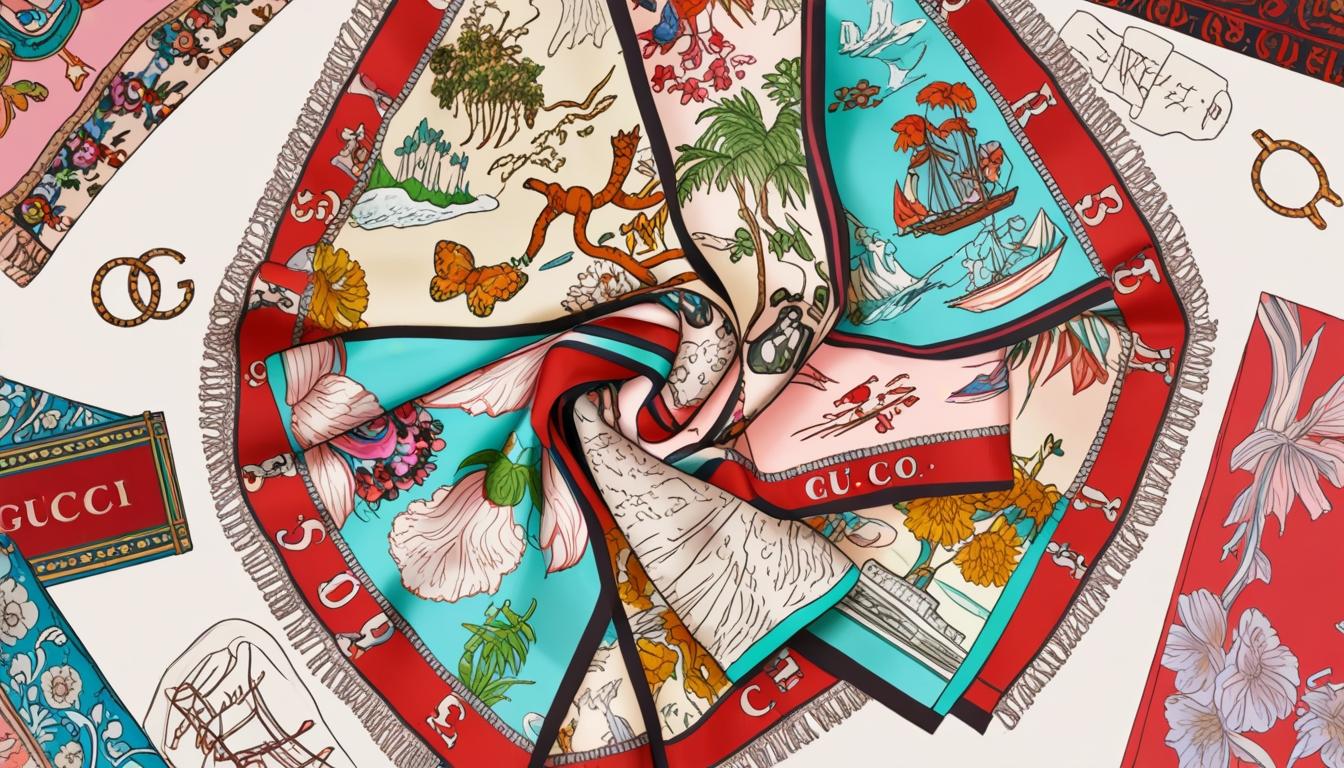Gucci honors its history while embracing innovation with the appointment of Demna as the new creative director and the launch of the ’90×90′ project, featuring collaboration with international artists.
Gucci, the renowned Italian luxury fashion house, has recently made headlines by appointing Demna as its new creative director, marking a pivotal moment for the brand as it ushers in a new chapter while simultaneously honoring its extensive 104-year history. The house has announced the launch of the “90×90” project, which encourages artistic reinterpretation of its storied design themes focusing on silk craftsmanship, a key element of its identity.
As part of the “90×90” initiative, Gucci has enlisted nine international artists to engage with five themes drawn from its rich archives, which include flora, fauna, nautical, equestrian, and the iconic GG Monogram. This creative endeavor is designed to showcase the brand’s history while charting a contemporary path forward.
In addition to the project, Gucci is set to release a book titled “Gucci: The Art of Silk,” in collaboration with Assouline, by the end of April. This publication promises an insightful exploration of the artistry, craftsmanship, and cultural importance of Gucci’s silk scarves, tracing their evolution and significance through the decades.
Sales for the “90×90” scarves are scheduled to begin on April 1, coinciding with a marketing campaign spotlighting Gucci’s silk and foulards segment. The following day, activations celebrating “The Art of Silk” will take place in Paris, featuring an event at the brand’s Rue Saint-Honoré store alongside a themed dinner event.
Gucci’s journey with silk craftsmanship dates back to the 1950s, with early designs that drew influence from the brand’s signature leather goods. The first scarf to be definitively dated from the brand is the 1958 nautical-themed “Tolda di Nave [Deck of a Ship],” produced in Como, Italy.
The 1960s proved transformative for Gucci as the brand collaborated with illustrator Vittorio Accornero de Testa, whose detailed illustrations and vibrant motifs played a significant role in propelling the silk scarf segment forward. During his prolific tenure from 1960 to 1981, Accornero created nearly 80 scarves that turned silk into fashionable art.
Among the many motifs, the Flora scarf, created in 1966 at the request of Princess Grace of Monaco, stands out as one of Gucci’s most iconic designs. Featuring 43 varieties of flowers, plants, and insects, each intricately painted by hand, this design exemplified the meticulous craftsmanship the brand is known for and inspired its first silk dress in 1969.
The Marina Chain motif emerged in the mid-1970s, initially appearing in jewelry and accessories before expanding to scarves and ready-to-wear apparel. Accornero’s animal-themed prints, featuring a variety of wildlife, also left a lasting imprint through the latter half of the 20th century.
The GG Monogram, which debuted in 1969, transitioned the brand’s visual identity by incorporating interlocking Gs in a diamond pattern, eventually becoming a hallmark seen across scarves, ties, and clothing.
Gucci’s equestrian influences have roots in the 1950s with designs reflecting outdoor pursuits, notably through symbols such as the Gucci Web and the Horsebit motif, which has since become synonymous with the brand.
The diverse lineup of artists chosen for the “90×90” project includes notable figures such as Robert Barry, who expressed his enthusiasm about the project, stating, “I want my work to be out in public where people can experience it.” Other contributors, including Everett Glenn and Currynew, emphasized the unique opportunity to express artistic narratives through wearable art.
Further complementing these initiatives is the anticipated book “Gucci: The Art of Silk,” which features a curated collection of insights into the history and artistry associated with Gucci’s foulards. The hardcover volume, presented in a silk-printed slipcase, spans 300 pages and showcases Gucci’s Flora motif, reinforcing the importance of silk within the brand’s heritage. The book will be available on Gucci.com, Assouline sites, and select Gucci stores globally.
Source: Noah Wire Services




This page showcases multifunctional timepieces crafted by trusted manufacturers.
Here you’ll discover premium CD devices with AM/FM radio and dual alarms.
Many models feature external audio inputs, charging capability, and backup batteries.
This collection covers value picks to luxury editions.
alarm clocks with cd players
All clocks offer snooze functions, rest timers, and LED screens.
Order today through Walmart with fast shipping.
Discover your ultimate wake-up solution for home everyday enjoyment.
This website, you can discover a great variety of online slots from leading developers.
Users can enjoy traditional machines as well as feature-packed games with high-quality visuals and interactive gameplay.
Whether you’re a beginner or an experienced player, there’s a game that fits your style.
money casino
The games are instantly accessible round the clock and compatible with PCs and smartphones alike.
No download is required, so you can jump into the action right away.
Platform layout is user-friendly, making it convenient to explore new games.
Register now, and discover the world of online slots!
???????????? ????????? ??????? ??? ??????????? ?????????? ?????????? ??? ????? ????????.
??? ???? ??????????? ???????? ????????? ?????? ?? ?????? ??????????.
????? ??????????? ???????????? ??? ?????????.
??? ????? ?????????? ????????????? ??????? ?????? ??????????.
????? ???? ????
??? ???????????? ???????????? ????? ?????? ??????? ???????.
????????? ??????? ????? ???????? ??????? ????????????.
????? ???? ??????? ??????????? ????? ??????????.
???????? ?????????? ?????????? ????? ?????????? ????? ?????? ? ?????????.